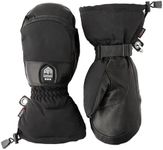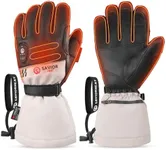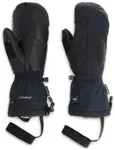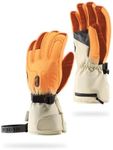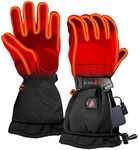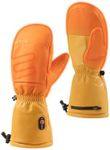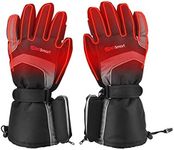Buying Guide for the Best Heated Mitten For Women
When it comes to choosing the right heated mittens for women, it's important to consider several key specifications to ensure you get the best fit for your needs. Heated mittens are designed to keep your hands warm in cold weather, making them ideal for outdoor activities like skiing, hiking, or simply walking in winter conditions. By understanding the key features and how they align with your personal requirements, you can make an informed decision and enjoy warm, comfortable hands all season long.Heating ElementsHeating elements are the components within the mittens that generate heat. This spec is crucial because it determines how evenly and effectively the mittens will warm your hands. Heating elements can be made from various materials, such as carbon fiber or metal wires. Carbon fiber elements tend to provide more even heat distribution and are often more durable. When choosing heated mittens, consider how quickly and evenly they heat up. If you need mittens for extremely cold conditions, look for those with high-quality heating elements that cover a larger area of the mitten.
Battery LifeBattery life refers to how long the mittens can provide heat on a single charge. This is important because it affects how long you can stay warm without needing to recharge. Battery life can vary widely, typically ranging from 2 to 8 hours depending on the heat setting. If you plan to use the mittens for extended periods, such as for a full day of skiing, look for mittens with longer battery life. For shorter activities, mittens with a shorter battery life may suffice. Additionally, consider whether the batteries are rechargeable and how long they take to recharge.
Heat SettingsHeat settings allow you to adjust the temperature of the mittens to your comfort level. This spec is important because it provides flexibility in different weather conditions and personal preferences. Most heated mittens come with multiple heat settings, usually ranging from low to high. If you often find yourself in varying temperatures, look for mittens with a wide range of heat settings. This way, you can customize the warmth to suit the current conditions. For those who are sensitive to cold, having more heat settings can be particularly beneficial.
Material and InsulationThe material and insulation of the mittens determine their overall warmth and comfort. This spec is important because it affects both the effectiveness of the heating elements and the mittens' ability to retain heat. Common materials include leather, synthetic fabrics, and fleece linings. High-quality insulation, such as Thinsulate or down, can enhance warmth without adding bulk. When choosing heated mittens, consider the type of activities you'll be doing. For high-intensity activities, look for breathable materials that wick away moisture. For more sedentary activities, prioritize mittens with thicker insulation for maximum warmth.
Fit and SizeFit and size are crucial for comfort and effectiveness. Mittens that are too tight can restrict blood flow and reduce warmth, while mittens that are too loose may not retain heat effectively. This spec is important because a proper fit ensures that the heating elements are in close contact with your skin, providing optimal warmth. When choosing heated mittens, refer to the sizing chart provided by the manufacturer and measure your hand accordingly. Consider whether you will be wearing liners or additional layers underneath the mittens, and choose a size that accommodates this without being too tight.
WaterproofingWaterproofing is the ability of the mittens to keep your hands dry in wet conditions. This spec is important because wet hands can quickly become cold, negating the benefits of the heating elements. Waterproof mittens are typically made with materials like Gore-Tex or have a waterproof membrane. When choosing heated mittens, consider the weather conditions you'll be facing. For activities in snowy or rainy environments, look for mittens with high waterproof ratings. For dry, cold conditions, waterproofing may be less critical, but still beneficial for overall comfort.

